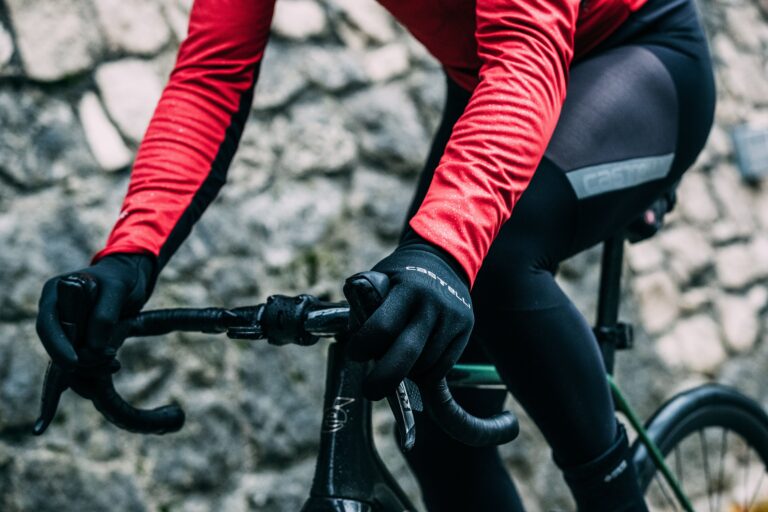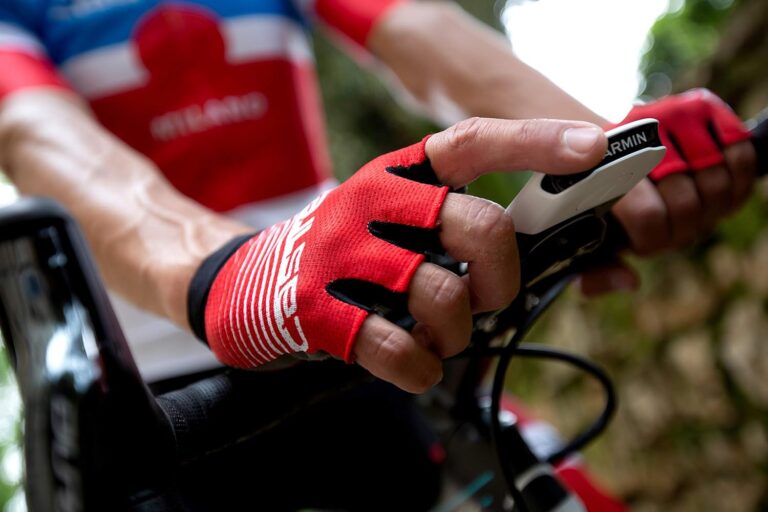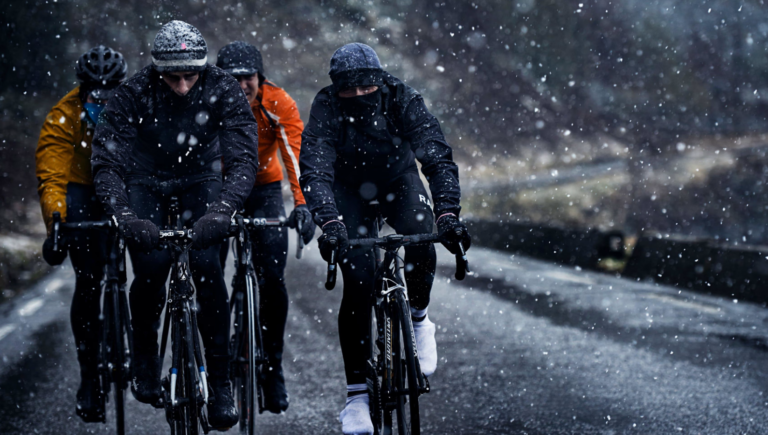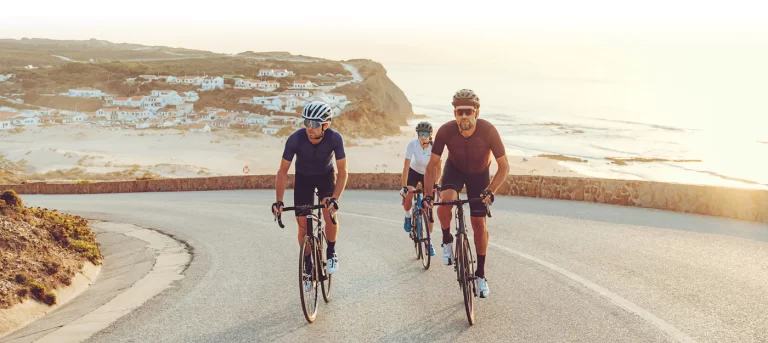Cycling Glove Buyers Guide
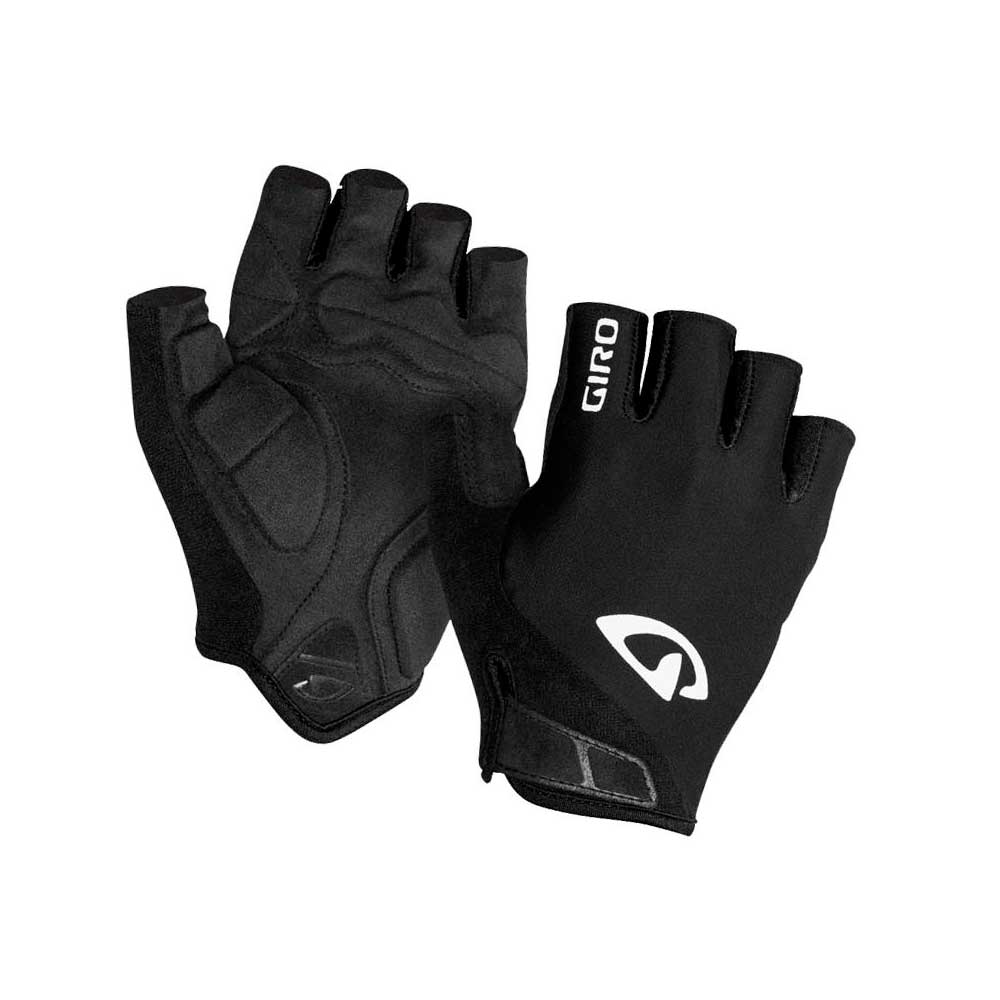
Welcome to the ultimate Cycling Glove Buyers Guide, your go-to resource for finding the perfect cycling gloves tailored to your riding needs. Whether you’re a passionate road cyclist, a rugged mountain biker, or a dedicated winter rider, this comprehensive guide will walk you through the essential factors and features to consider when selecting the ideal cycling gloves. Discover how the right gloves can enhance your comfort, control, and protection on the road.
Why You Need a Cycling Glove Buyers Guide
Cycling gloves aren’t just an accessory; they’re a crucial part of your cycling gear. They provide several benefits that can significantly improve your riding experience:
Comfort: Cycling gloves absorb road vibrations, reducing hand fatigue during long rides. They offer cushioning to prevent numbness and discomfort, so you can ride in comfort for hours.
Grip Enhancement: High-quality gloves enhance your grip on the handlebars, ensuring better control and safety, even in wet or sweaty conditions.
Hand Protection: In case of falls or accidents, cycling gloves act as a protective barrier, shielding your hands from abrasions, cuts, and minor impacts.
Temperature Regulation: Some gloves are designed for specific weather conditions. They provide insulation to keep your hands warm in cold weather or breathability to prevent overheating in hot climates.
Moisture Management: Gloves wick away sweat and moisture, maintaining a firm grip and preventing slippery hands. This means improved control and safety.
Cycling Glove Buyers Guide-How to Choose the Perfect Cycling Gloves
When you’re ready to choose your ideal cycling gloves, consider these critical factors to ensure they meet your unique requirements:
Fit and Sizing: The right fit is essential for comfort and performance. Gloves that are too tight can cause discomfort, while those that are too loose may compromise your grip. Consult the manufacturer’s sizing chart and measure your hand to find the perfect fit.
Style and Design: Cycling gloves come in various styles, including full-finger, fingerless, and mittens. Select the style that suits your riding preferences and conditions. Full-finger gloves provide better protection and warmth, while fingerless gloves are ideal for hot weather.
Material: Pay attention to the materials used in the gloves:
- Synthetic Materials: Many gloves use synthetic materials such as polyester, spandex, or nylon. These materials are lightweight, breathable, and often budget-friendly.
- Leather: Leather gloves offer durability and a classic appearance. They may require a break-in period but provide excellent grip and protection.
- Gel Padding: Some gloves feature gel padding on the palms to absorb vibrations and enhance comfort on lengthy rides.
Closure System: Examine the closure system, which can include Velcro straps, elastic cuffs, or hook-and-loop fasteners. Ensure that it provides a secure fit without being overly restrictive.
Ventilation: For warm-weather cycling, opt for gloves with ventilation features like mesh panels or perforations to keep your hands cool and reduce sweat.
Padding and Cushioning: Take into consideration the level of padding and cushioning in the gloves, particularly if you experience hand numbness or discomfort. Different gloves offer varying levels of padding, allowing you to choose according to your preferences.
Weather Resistance: If you plan to ride in wet conditions, consider gloves that are water-resistant or waterproof. They will help keep your hands dry and maintain a good grip on wet handlebars.
Touchscreen Compatibility: Some gloves are designed with touchscreen-compatible fingertips, enabling you to use your smartphone or GPS device without removing your gloves.
Reflective Elements: For added safety during low-light or nighttime rides, select gloves with reflective elements that enhance your visibility to other road users.
Cycling Glove Buyers Guide-Types of Cycling Gloves to Consider
Cycling gloves come in various types, each tailored to different riding styles and conditions:
Road Cycling Gloves: These gloves are typically lightweight and designed for exceptional grip and control. They are available in both full-finger and fingerless styles and are well-suited for road biking.
Mountain Biking Gloves: Crafted for off-road adventures, mountain biking gloves often feature additional padding, reinforced palms, and full-finger coverage for enhanced protection.
Winter Cycling Gloves: Insulated and windproof, these gloves are engineered to keep your hands warm during cold-weather rides. They are an essential choice for winter cycling enthusiasts.
Gel-Padded Gloves: These gloves incorporate gel inserts on the palms, effectively reducing hand fatigue and absorbing vibrations, making them the ideal choice for long-distance cycling.
Cycling Glove Buyers Guide-Conclusion
Investing in the right pair of cycling gloves can significantly elevate your riding experience by providing comfort, grip, and protection. Take into account your riding style, prevailing weather conditions, and personal preferences when selecting the perfect gloves for your needs. With the right gloves, you’ll not only cycle more comfortably but also ride with increased confidence and safety. Explore our selection of cycling gloves and embark on your next ride fully prepared. John
Click to find the best long fingered cycling gloves rated and ranked
Click to find the best short fingered cycling gloves rated and ranked
Cycling Glove Buyers Guide-How do I know what size cycling gloves to buy?
Determining the correct size of cycling gloves is essential for comfort and performance. Ill-fitting gloves can lead to discomfort and may affect your grip on the handlebars. To find the right size of cycling gloves, follow these steps:
- Measure Your Hand:
- Use a flexible measuring tape or a piece of string to measure the circumference of your hand around the widest part, which is typically just below the knuckles of your four fingers (excluding your thumb).
- Make sure the measuring tape or string is snug but not too tight.
- Check the Manufacturer’s Sizing Chart:
- Different brands and models may have slightly different sizing charts, so always refer to the manufacturer’s sizing chart for the specific gloves you’re interested in.
- Manufacturers often provide size recommendations based on your hand’s circumference in inches or centimeters.
- Choose the Size:
- Based on your hand measurement and the manufacturer’s sizing chart, select the corresponding size. Most cycling gloves are available in sizes ranging from XS (extra small) to XXL (extra extra large).
- If your hand measurement falls between two sizes, consider your personal preferences. If you prefer a snug fit, choose the smaller size. For a slightly looser fit, opt for the larger size.
- Try Them On (if possible):
- If you have the opportunity, try on the gloves in a local bike shop or sporting goods store to ensure they fit comfortably and securely.
- Pay attention to how the gloves feel when gripping the handlebars, making sure they don’t bunch up or create discomfort at the seams.
- Consider Finger Length:
- In addition to hand circumference, consider the length of your fingers. Some gloves may have longer or shorter fingers, which can affect the overall fit and comfort.
- Read Customer Reviews:
- Customer reviews can provide valuable insights into the fit and sizing of specific glove models. Others’ experiences can help you make an informed decision.
Remember that sizing can vary between brands and even between different glove models from the same manufacturer. Therefore, it’s crucial to consult the sizing chart provided by the specific brand and model you’re interested in to ensure the best fit.
Ultimately, the goal is to find cycling gloves that fit snugly but comfortably, allowing you to maintain a secure grip on the handlebars and reducing the risk of discomfort or chafing during your rides.
Cycling Glove Buyers Guide-Are cycling gloves better in gel or foam?
Whether cycling gloves are better with gel padding or foam padding depends on your personal preferences and the type of cycling you do. Both gel and foam padding have their advantages and are suitable for different situations. Here’s a comparison of the two:
Gel Padding:
- Vibration Damping: Gel padding is excellent at absorbing vibrations from the road or trail. This can help reduce hand fatigue and numbness on longer rides, making them suitable for road cyclists and mountain bikers who encounter rough terrain.
- Pressure Distribution: Gel padding distributes pressure evenly across your palms, which can be particularly beneficial for riders who spend a lot of time in the saddle.
- Comfort: Gel-padded gloves are often considered very comfortable, especially for rides where you’re holding onto the handlebars for an extended period.
Foam Padding:
- Lightweight: Foam padding is generally lighter than gel padding, making it a preferred choice for riders who prioritize minimalism and a lighter feel.
- Breathability: Foam-padded gloves often have better breathability due to their lighter construction. This makes them suitable for hot weather or intense rides where sweat management is crucial.
- Control: Some riders prefer foam padding because it provides a better feel for the handlebars, offering a more direct connection between their hands and the bike’s controls.
Which One to Choose:
- For long-distance road cycling or rough mountain biking where vibration damping and comfort are paramount, gel-padded gloves are an excellent choice.
- For hot weather conditions, shorter rides, or riders who prefer a more direct feel of the handlebars, foam-padded gloves may be a better option.
- It’s worth noting that some gloves combine both gel and foam padding strategically to provide the benefits of both. These hybrid gloves aim to offer a balance between comfort and control.
Ultimately, the choice between gel and foam padding comes down to your specific needs and riding style. You may also want to consider trying both types of gloves to determine which one feels more comfortable and suits your preferences. Additionally, the fit and overall quality of the gloves play a significant role in their effectiveness, so it’s essential to ensure a proper fit and choose a reputable brand when selecting your cycling gloves.
Cycling Glove Buyers Guide-Are long or short gloves better for cycling?
The choice between long and short cycling gloves depends on various factors, including your personal preferences, riding conditions, and the type of cycling you do. Both long and short gloves have their advantages, so it’s essential to consider your specific needs when making a decision.
Short Cycling Gloves (Fingerless or Half-Finger Gloves):
Advantages of short cycling gloves include:
- Cooler in Hot Weather: Fingerless gloves provide better ventilation and are ideal for hot weather conditions. They allow your hands to breathe and reduce the risk of overheating and excessive sweating.
- Dexterity and Control: Short gloves offer more dexterity and allow for a more direct feel of the handlebars and controls. This can be beneficial for road cyclists and mountain bikers who require precise control over their bike.
- Finger Flexibility: With exposed fingertips, you can easily operate touchscreens, adjust your bike’s gears, or perform other tasks without removing your gloves.
- Lightweight: Short gloves are generally lighter and less bulky, making them a preferred choice for riders who want a minimalist feel.
Cycling Glove Buyers Guide-Long Cycling Gloves (Full-Finger Gloves):
Advantages of long cycling gloves include:
- Protection: Full-finger gloves offer better protection for your hands, especially if you ride in areas with rough terrain, trails with overhanging branches, or if you’re prone to falls. They shield your hands from abrasions, cuts, and minor impacts.
- Warmth: Long gloves are suitable for colder weather, as they provide additional coverage and insulation to keep your hands warm. Some long gloves are specifically designed for winter cycling and offer excellent warmth.
- Additional Padding: Full-finger gloves often have more room for padding on the palms, which can help absorb road vibrations and reduce hand fatigue during long rides.
- Versatility: Long gloves can be versatile, as they can be used in various riding conditions. You can wear them in both hot and cold weather by choosing appropriate materials and insulation.
Cycling Glove Buyers Guide-Which One to Choose:
- For hot weather and rides where maximum dexterity and ventilation are essential, short cycling gloves are a better choice.
- For cooler weather, protection against potential hazards, or longer rides where hand fatigue may be a concern, long cycling gloves are more suitable.
- Some riders prefer to have both short and long gloves in their cycling gear collection to accommodate different seasons and conditions.
Ultimately, the decision between long and short cycling gloves depends on the conditions you typically ride in and your personal comfort and safety preferences. Consider owning both types of gloves to ensure you’re prepared for a wide range of cycling situations.
Cycling Glove Buyers Guide-Should cycling gloves be snug?
Yes, cycling gloves should be snug but not overly tight. A snug fit is essential to ensure that the gloves provide the comfort, control, and protection you need during your rides. Here are some key points to keep in mind regarding the fit of cycling gloves:
- Comfort: A snug fit helps prevent the gloves from bunching up or causing discomfort, such as chafing or irritation, during your rides. Gloves that are too loose can lead to these issues and may affect your overall comfort.
- Control: Gloves should fit snugly to maintain a secure grip on the handlebars and bike controls. This is crucial for maintaining control, especially in wet or challenging conditions.
- Protection: A properly snug fit ensures that the gloves cover your palms and fingers effectively, providing the intended protection against abrasions, cuts, and minor impacts in case of falls or accidents.
- Reduced Hand Fatigue: When gloves fit snugly, they can better absorb vibrations from the road, reducing hand fatigue and numbness on longer rides.
- Minimal Bunching: Gloves that fit snugly are less likely to bunch up between your fingers or at the seams, ensuring a smooth and comfortable feel.
However, it’s important to note that “snug” does not mean overly tight or restrictive. You should have enough flexibility and range of motion in your fingers and wrists to comfortably operate your bike’s controls and brakes. Gloves that are too tight can impede circulation and may lead to discomfort or numbness.
Here’s how to check if cycling gloves have a good fit:
- Make a fist while wearing the gloves. You should feel a slight, even pressure around your fingers and palm.
- Check that the gloves cover the entire palm without any gaps.
- Ensure the gloves don’t restrict the movement of your fingers and wrists, allowing you to comfortably shift gears, brake, and use the handlebars.
Keep in mind that sizing may vary between brands and glove models, so it’s essential to consult the manufacturer’s sizing chart and consider trying on gloves before purchasing to ensure the right fit for your specific hand shape and size. Ultimately, finding the right balance between a snug fit and comfort is key to enjoying your cycling gloves to the fullest.
Link to our top-rated short-finger cycling glove
